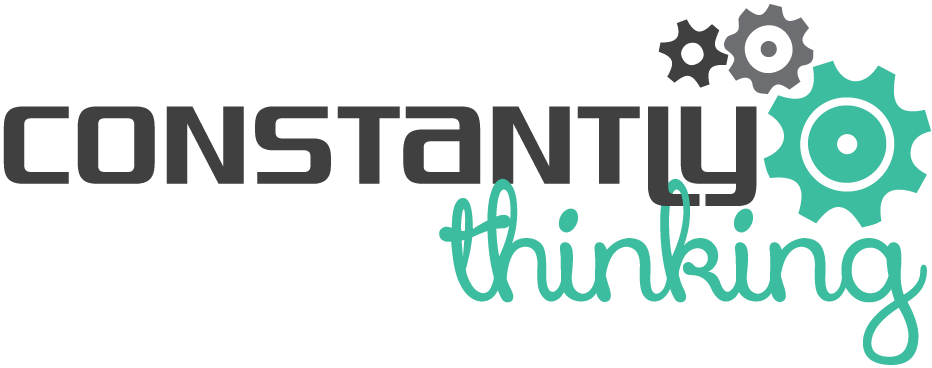
How Parallel Coding with AI is Revolutionizing Software Development Productivity
In the rapidly evolving landscape of software development, efficiency and scalability are more critical than ever. Traditional coding methods, while foundational, face limitations in speed, consistency, and handling complex, large-scale systems. However, the advent of Artificial Intelligence (AI) has begun to transform how developers approach coding tasks, especially through parallel coding — a paradigm where AI aids in executing multiple coding processes simultaneously. This comprehensive exploration will uncover how AI-powered parallel coding is revolutionizing software development productivity, delving into the core concepts, technological advances, practical applications, benefits, challenges, and future prospects.
Understanding Parallel Coding in AI
What is Parallel Coding?
Parallel coding involves executing multiple coding tasks simultaneously rather than sequentially. At its core, the approach aims to reduce development time, increase throughput, and improve resource utilization. Traditionally, this might involve multi-threaded programming or distributed computing systems. In contrast, AI-enhanced parallel coding utilizes machine learning models, natural language processing, and automation platforms to generate, test, and optimize code snippets concurrently.
The Role of AI in Parallel Coding
AI acts as an intelligent assistant, capable of:
- Automated Code Generation: Synthesizing code snippets based on high-level specifications.
- Code Autocompletion: Predicting subsequent code segments with high accuracy.
- Code Refactoring and Optimization: Analyzing code for improvements or bug fixes.
- Testing and Validation: Running parallel tests to detect issues immediately.
- Learning and Adapting: Improving its suggestions based on past interactions.
By integrating AI in a parallel fashion, development teams can significantly accelerate workflows, reduce manual effort, and improve code quality.
Technological Foundations and Tools
AI Models Powering Parallel Coding
Several advanced AI models underpin this revolution, notably:
- Transformers: Foundational in models like OpenAI’s GPT series, enabling sophisticated natural language understanding and code synthesis.
- Code-Specific Models: Such as OpenAI’s Codex, designed specifically for programming tasks.
- Reinforcement Learning: For optimizing code generation and testing sequences.
Leading Platforms and Tools
Some prominent platforms facilitating parallel AI coding include:
- GitHub Copilot: An AI pair programmer that suggests code snippets in real time, capable of working on multiple tasks simultaneously.
- Amazon CodeGuru: Provides automated code reviews and performance recommendations that run in parallel.
- DeepCode: Uses AI to analyze codebases and detect issues concurrently.
- TabNine: Offers AI-driven autocompletion with supporting multiple languages and projects.
Visual Content Suggestion: An infographic illustrating how these tools integrate into the development pipeline, showing several tasks (code generation, review, testing) running in parallel.
Practical Applications and Case Studies
Accelerating Development Cycles
Organizations leveraging AI-driven parallel coding have reported dramatic reductions in development cycles. For example, a mid-sized tech company integrated AI tools into their CI/CD pipeline, enabling:
- Parallel generation of code modules.
- Automated testing in real-time.
- Continuous code review.
This process reduced feature rollout times from weeks to days, boosting time-to-market.
Improving Code Quality with Parallel Testing
AI-powered tools enable parallel execution of unit tests, static analysis, and security scans. Companies like Google and Microsoft have adopted such approaches to maintain high standards across massive codebases, ensuring rapid yet reliable deployment cycles.
Case Study: Financial Sector
Financial institutions use AI-assisted parallel coding for risk assessment algorithms. By automating coding, testing, and validation in parallel, they can:
- Rapidly adapt models to regulatory changes.
- Identify vulnerabilities faster.
- Enhance the security and stability of financial systems.
Benefits of AI-Driven Parallel Coding
| Benefit | Description | Supporting Evidence |
|---|---|---|
| Increased Productivity | Automates repetitive coding tasks, freeing developers for complex problem-solving. | According to a report from McKinsey & Company, AI can increase software development productivity by up to 50%. |
| Faster Time-to-Market | Parallel execution reduces development and testing cycles. | Case studies show companies achieving 2-3x faster feature releases. |
| Enhanced Code Quality | Concurrent testing and review minimize bugs and vulnerabilities. | AI-driven code reviews have detected issues earlier, decreasing post-release bugs. |
| Cost Savings | Reduction in manpower hours and faster deployment lead to savings. | Industry estimates indicate significant cost reductions in large software projects using AI automation. |
| Scalability | Handling complex, large datasets and systems becomes feasible. | AI-supported parallel development scales seamlessly with project size. |
Challenges and Limitations
Despite the impressive benefits, AI-powered parallel coding is not without hurdles:
- Data Quality and Bias: AI models depend on high-quality training data; biased data can lead to insecure or inefficient code.
- Understanding Context: Limited AI comprehension of project-specific nuances might produce suboptimal code suggestions.
- Integration Complexity: Incorporating AI tools into existing workflows requires effort and technical expertise.
- Security Concerns: Automated code generation may inadvertently introduce vulnerabilities if not carefully monitored.
- Over-Reliance Risks: Excessive dependence on AI recommendations might diminish developer skill over time.
Visual Content Suggestion: A diagram illustrating potential risks versus mitigation strategies in AI-assisted parallel coding.
Future Outlook and Trends
Emerging Innovations
- Enhanced Context Awareness: Next-gen models will better understand enterprise-specific architectures, frameworks, and coding standards.
- Hybrid Approaches: Combining human expertise with AI automation to optimize productivity.
- ** Better Explainability**: Building models that provide transparent rationales for code suggestions.
- Integration with DevOps: Automated code generation, testing, and deployment pipelines will become more seamless.
Expected Impact on Software Development
- Increased Adoption: More organizations will embed AI into daily workflows.
- Skill Evolution: Developers will need to adapt to new tools and focus more on designing system architectures rather than writing boilerplate code.
- Shift Towards Automation-Focused Teams: Engineering teams will become more automation-oriented, emphasizing oversight and quality assurance.
Visual Content Suggestions
- Flowchart: Visualizing AI-supported parallel coding workflow from code generation to deployment.
- Bar Chart: Showing productivity gains across different industries adopting AI-enabled parallel coding.
- Infographic: Summarizing benefits, challenges, and future trends in a digestible format.
- Timeline: Evolution of AI in software development highlighting milestones leading to current parallel coding innovations.
Conclusion
The integration of AI into parallel coding marks a transformative leap in software development productivity. By enabling multiple processes—code generation, testing, review—in parallel, AI reduces time, increases quality, and scales capabilities in ways previously unattainable with traditional methods.
While challenges remain, continuous advancements in AI models, better integration strategies, and evolving best practices promise a future where software development is more agile, efficient, and innovative. As organizations harness these technologies responsibly, they stand to gain a competitive edge in an increasingly digital world.
References
- McKinsey & Company. “AI and Software Development: Unlocking Efficiency.” 2022.
- OpenAI. “GPT-4 and Codex: Revolutionizing Natural Language and Code Understanding.” 2023.
- GitHub. “Copilot Documentation: AI-Powered Code Assistance.” 2023.
- Microsoft. “Azure DevOps and AI: Enhancing Software Delivery.” 2023.
- Industry Reports. “The Impact of AI on Software Engineering,” IEEE Software Magazine, 2022.
Visual Content Suggestion: A comprehensive diagram showing how AI-enabled parallel coding integrates into the typical SDLC (Software Development Life Cycle), emphasizing acceleration points and automation touchpoints.
Harnessing the synergy of AI and parallel coding is not just a trend but a fundamental shift setting new standards for speed, quality, and innovation in software development. Staying ahead requires embracing these advances thoughtfully and strategically.






